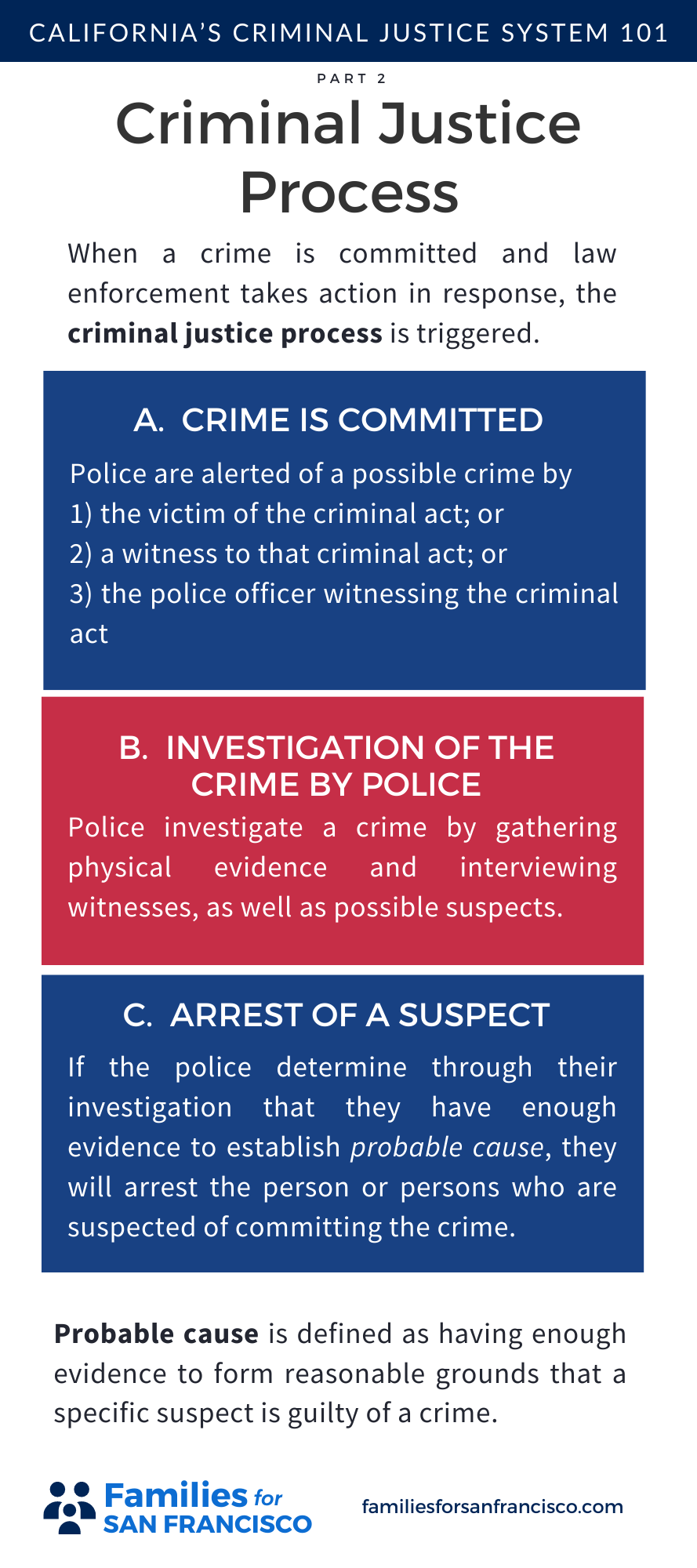CALIFORNIA’S CRIMINAL JUSTICE SYSTEM 101: Part 2
This is the second part of our Criminal Justice System 101 series, where we will cover what happens once a crime is committed (i.e., police response, investigation, and arrest). In Part 1 we explained the concept of JURISDICTION, which is the government’s authority to interpret and apply the law.
When a crime is committed and law enforcement takes action in response, the criminal justice process is triggered.
A. CRIME IS COMMITTED
Before the criminal justice process can begin, a crime must be committed or someone must think that a crime has been committed. This suspected criminal behavior must then be reported to the police. The police are usually alerted of a possible crime either in person or through a 911 call:
1) By the victim of the criminal act; or
2) By a witness to that criminal act; or
3) By the police officer witnessing the criminal act
B. INVESTIGATION OF THE CRIME BY POLICE
Once the police are notified of a possible crime it is their job to stop the crime if it is in progress or investigate the crime if it has already occurred. Police investigate a crime by gathering physical evidence and interviewing witnesses, as well as possible suspects.
C. ARREST OF A SUSPECT
If the police determine through their investigation that they have enough evidence to establish probable cause, they will arrest the person or persons who are suspected of committing the crime.
One of the most important concepts in the criminal justice process, probable cause is defined as having enough evidence to form reasonable grounds that a specific suspect is guilty of a crime.
Section 1.4 of the Board of Supervisors in San Francisco defines probable cause as “more evidence for than against the prospect that the person sought is guilty of a crime, yet reserving the possibility for doubt.” When the police have probable cause that a crime has been or is being committed, they can arrest you, search your car, and with a warrant even search your home.
RECAP
Families for Francisco’s report will focus on crimes and cases within state and local level jurisdiction.
Check out Part 3 on what happens after an arrest.

